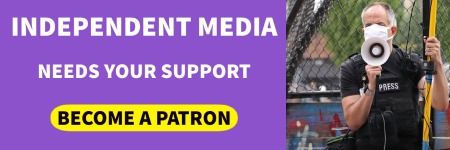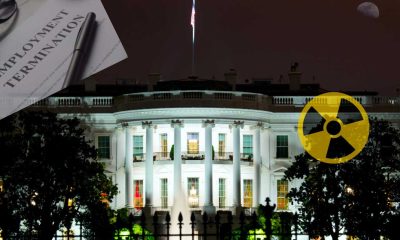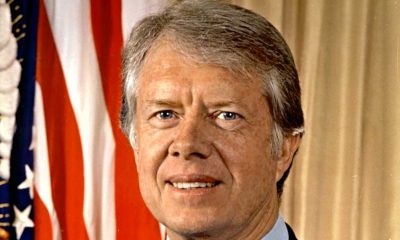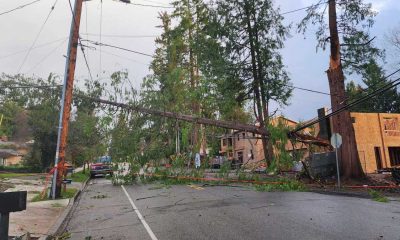International News
Part 6: The complex history of Islamic extremism and Russia’s contribution to the rise of Al Qaeda and ISIS
Part six of a ten part series explaining how a series of events starting in 1951 led to the creation of Al Qaeda and ISIS, and their mid-21st century resurgence.
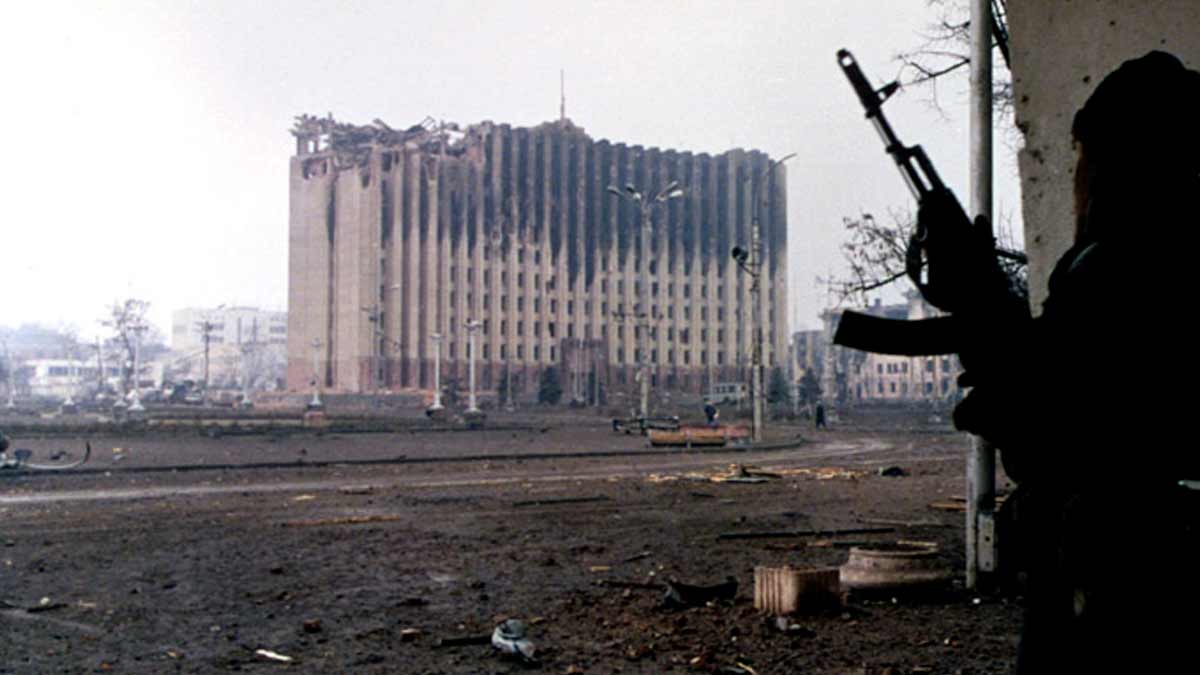
This is part six of a ten-part series that explains the rise of modern Islamic extremism. From 1951 to 2021, a series of key geopolitical events, many independent of each other, caused the Islamic Revolution, the rise of Al Qaeda and ISIS, the creation and collapse of the caliphate, and the reconstitution of ISIS as ISKP. While Western influence and diplomatic blunders are well documented through this period, the Soviet Union and the Russian Federation are equally culpable. The editors would like to note that a vast majority of the 1.8 billion people who are adherents to some form of Islam are peaceful and reject all forms of religious violence.
Read Part Five: The complex history of Islamic extremism and Russia’s contribution to the rise of Al Qaeda and ISIS
The Russian Civil War the West ignored—The First Chechen War
A very brief history of Chechnya
From March 1990 to September 1991, 11 Soviet republics that used to be countries broke away from the Union of the Soviet Socialist Republics. What made the revolution in the Checheno-Ingush Autonomous Soviet Socialist Republic unique was that the region had never been its own country.
During the Caucasus Wars, the Imperial Russian Empire fought a loose association of vassal states and the Ottoman Empire from 1819 to 1864. During the 45-year conflict, hundreds of thousands were forced to flee to the Middle East, the Ottoman Empire, and Persia. Ultimately, the Caucasus was absorbed into the Empire, and fighting between the Ottoman Turks and Russia continued.
When the Russian Imperial Empire collapsed in 1917, Chechens made their first attempt to form their country but were defeated in 1922 at the end of the Red Terror and became part of the Soviet Union. In 1936, Joseph Stalin arbitrarily created the Checheno-Ingush Autonomous Soviet Socialist Republic, located on the northern border of Georgia and Azerbaijan and deported, arrested, and executed thousands during the 1937 Great Purge.
During World War II, Nazi Germany occupied parts of the republic from 1942 to early 1944 during Hitler’s campaign to secure the Caucasus natural resources. After the Nazi withdrawal, Stalin ordered the republic to dissolve, accusing the residents who were living under occupation of collaborating with Germany. Over 500,000 were deported to slave labor camps in Siberia, imprisoned, and executed, accused of disloyalty to the state. The region was divided between three bordering republics.
In 1957, Soviet Secretary General Nikkita Kruschev reversed Stalin’s order of deportation, permitting survivors of Stalin’s genocide to return and reestablish the Checheno-Ingush Autonomous Republic.
Chechens seek independence
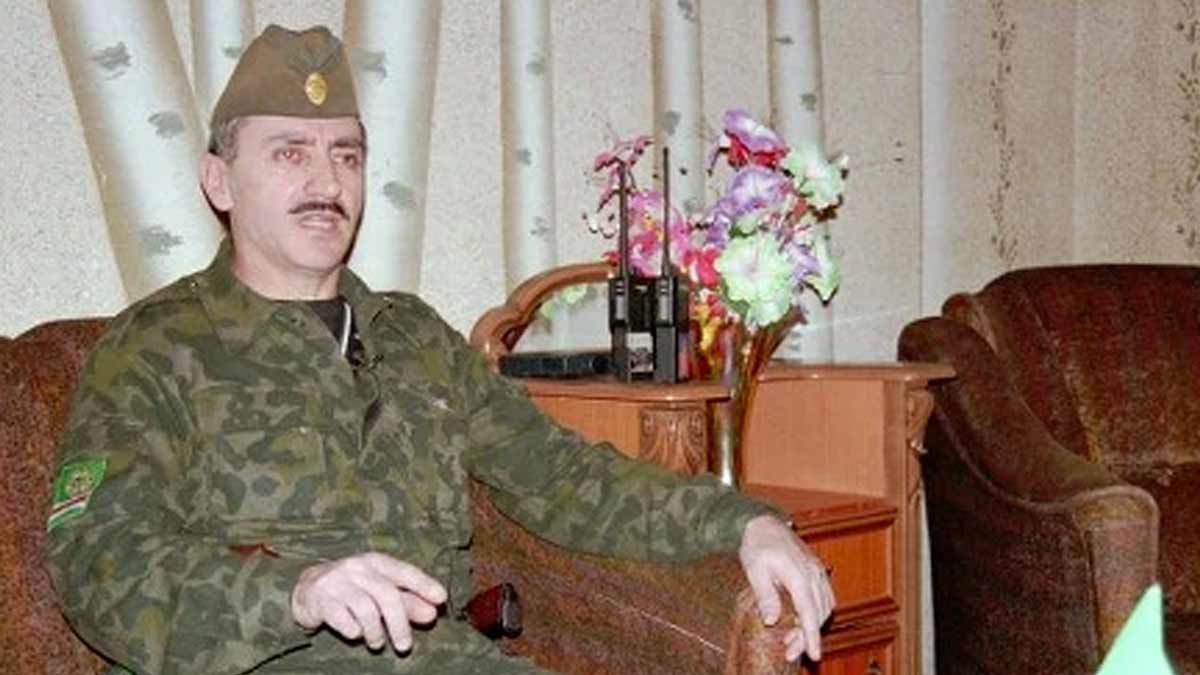
Chechen leader Dzhokhar Dudayev – date unknown
Credit – Photographer unknown – public domain
On November 27, 1990, the Supreme Soviet of the Checheno-Ingush Autonomous Republic declared itself as a sovereign state and adopted the name of the Checheno-Ingush Soviet Socialists Republic. Led by Dzhokhar Dudayev, the First Chechen National Congress met in June 1991, despite the Committee and the Supreme Soviet of the Checheno-Ingush Autonomous Republic still being seated.
In Russia, the failed coup d’etat by the Soviet Union Communist Party from August 19 to 21, 1991, saw the dissolution of the Communist Party and ultimately led to the final collapse of the Soviet Union four months later. Dudayev saw an opportunity to take advantage of the chaos.
In a third meeting of the Chechen National Congress at the beginning of September, the Committee and the Supreme Soviet of the Checheno-Ingush Autonomous Republic were removed, and political control was transferred to the Chechen National Congress Executive Committee.
On September 6, Dudayev declared the existing Soviet political and power structure had been dissolved. Armed supporters stormed TV and radio stations and the House of Political Education, where the Supreme Soviet was holding legislative meetings. Over 40 deputies were beaten, and the Supreme Soviet of the Grozny City Council was thrown out of a window. On September 15, the last meeting of the Supreme Soviet of the Checheno-Ingush Autonomous Republic dissolved Parliament and handed over control to the Chechen National Congress Executive Committee.
Elections were held on October 27 to install a new government despite a warning from Moscow that doing so would be illegal. Dudayev overwhelmingly won and, on October 28, formerly declared independence from the Russian Soviet Federative Socialist Republic.
The President of the Soviet Union, Boris Yeltsin, had survived the August coup largely due to poor organization and planning. Fearing he would look politically weak and concerned that other Oblasts and Republics within the RSFSR would declare independence, he ordered Russian Air Assault forces (VDV) deployed to the capital of Grozny to restore order and reestablish the Supreme Soviet of the Checheno-Ingush Autonomous Republic. Irregular troops loyal to Dudayev surrounded the airport, forcing the VDV to leave just three days later.
In June 1992, the self-declared Checheno-Ingush Soviet Socialist Republic split in two. The Republic of Ingushetia was formed along the Georgian border and joined the newly created Russian Federation, and the Chechen Republic was formed.
Old wounds and civil war
Dudayev severed economic and political ties with Moscow, collapsing the economy of the newly created republic. In the neighboring Republic of Ingushetia, old wounds caused by Stalin’s 1944 expulsion from the region exploded into ethnic violence between North Ossetians and Ingushetians. Yeltsin ordered Russian troops deployed to the Chechen border to stop arms shipments to Ingushetia, which Dudayev saw as a prelude to a Russian invasion. Chechnya didn’t test the border blockade, choosing to negotiate with Moscow to withdraw their troops.
The fighting in Ingushetia spilled over into Chechnya, which found itself in a low-grade civil war. There were four factions, including those loyal to Dudayev, those loyal to Moscow, those looking to settle old scores with Russians who were moved into the area by Stalin from 1944 to 1953, and those fighting in support of Ingushetia. Dudayev survived two coup d’etats—one in April 1993 and the second in December. After the failed second attempt, opposition leaders created a Provisional Council and asked Moscow for military assistance. By this time, Dudayev had transferred power to himself and in January 1994, renamed the Chechen Republic to the Chechen Republic of Ichkeria.
Moscow failed in its threat assessment in the run-up to the First Chechen War. Yeltsin and his advisors believed that the Armed Forces of the Russian Federation were well-trained and equipped, that Chechen separatists were of poor quality, and that Chechen citizens would welcome Russian troops as liberators.
Law and order were collapsing in 1994, and Moscow used a strategy of sending Russian troops as “little green men,” arming pro-Moscow separatists, and providing close air support using unmarked aircraft. Backed by the Russian Federation, opposition forces attacked Grozny in October and November, with both attempts ending in failure. During the second attack, forces loyal to Dudayev captured 20 Russian Federation soldiers and up to 50 members of Russian state security, exposing Moscow’s direct involvement.
On November 29, President Yeltsin issued an ultimatum. All factions were to disarm and the captured Russians must be released. Dudayev refused, and on December 1, Russia started a bombing campaign of Chechnya to set conditions for a land invasion. The First Chechen War had started.
Russian tactics breed a terroristic response
The Russian Federation started its ground attack on December 11. The Minister of Defense of Russia, Pavel Grachev, boasted that a single regiment could end the separatist movement and that major fighting would be completed by December 20.
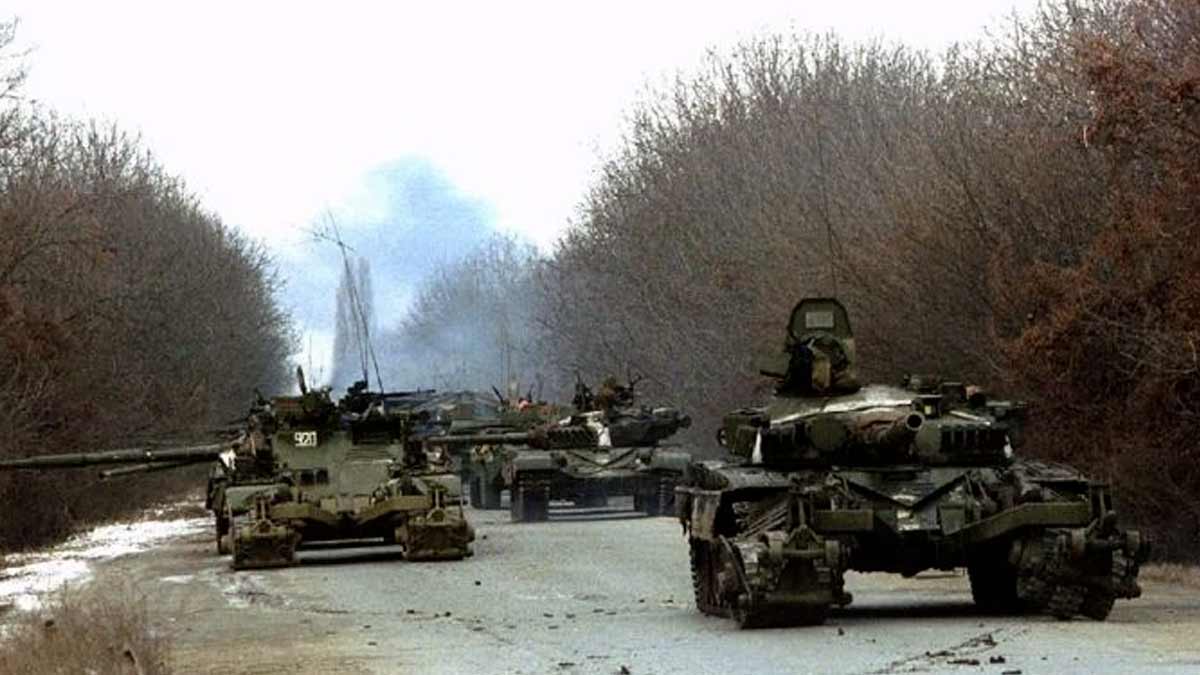
A destroyed column of Russian tanks in Dolinskoye, Chechnya – December 1994
Credit – Photographer unknown – public domain
Russian forces advanced to the outskirts of Grozny, and on December 29, a ten-day aerial bombardment and artillery campaign shattered the city, killing thousands of civilians. Russia accused Chechen separatists of using civilians as human shields, while Russia was accused of attacking civilians fleeing the assault. Grachev’s prediction of a nine-day special operation became a distant memory, and it was not until March 6, 1995, that Russian troops secured the remains of Grozny. Between 27,000 and 35,000 civilians were killed, with former Soviet Secretary General Mikhail Gorbachev condemning the assault.
The peak of Russian control of Chechen was reached in March 1996, followed by a series of crushing defeats, including the loss of control of Grozny. In less than two years, Russian losses were halfway to the Russo-Afghan War, and the campaign had become very unpopular. President Yeltsin was looking for an exit.
On August 19, the Russian Federation issued an ultimatum that it would use strategic bombers and ballistic missiles to destroy the rest of Grozny if Chechen separatists did not leave the city. The declaration created panic, and thousands of civilians were killed during the Russian shelling as they tried to flee. Three days later, Yeltsin’s national security advisor brokered a ceasefire and dismissed the previous ultimatum as a “joke.”
Despite numerous reports of war crimes and human rights atrocities in the newly created free press in the Russian Federation, Moscow officially tolerated the tactics of its military. The worst incident was the Samashki Massacre in 1995, where 300 civilians were executed and burned alive by Russian troops using flame throwers, machine guns, and grenades.
In 95% Muslim Chechnya, Jihad is declared
In 1991, Jordanian-Chechen Sheikh Ali Fathi al-Shishani returned to Grozny. Al-Shishani had fought with the mujahideen in Afghanistan against the Soviet Union, and in 1993, he formed the Salafi Islamic Jamaat in Chechnya, recruiting Jordanian-Palestinians to the cause.
In addition to the faction created by al-Shishani, as early as 1992, Muslim extremists in Chechnya were being supported by the Afghan Taliban-aligned Haqqani Network. Chechens and exiled Chechen nationals traveled to Pakistan and Afghanistan for training and engaged in illegal arms shipments, reportedly supported by the Pakistan intelligence services. Fighters, arms, and recruits moved across the Azerbaijani border. The Haqqani Network collaborated with Osama bin Laden during the Russo-Afghan War and, in 1995, pledged their loyalty to Al Qaeda.
In the first half of 1994, the first terror attacks carried out by the Salafi Islamic Jamaat and their supporters included the hijacking of airplanes and buses, mostly to draw attention to the situation in Chechnya. As al-Shishani grew his ranks and influence, he caught the attention of the Chief Mufti of Chechnya, Akhmat Kadyrov, and in December 1994, they formed the Chechen Mujahideen. A month later, Kadyrov, the father of Chechen warlord Colonel General Ramzan Kadyrov, announced a global Jihad against Russia and all its interests, declaring, “There are a million Chechens and 150 million Russians. If every Chechen kills 150 Russians, we will win.”
For the remainder of the First Chechen War, al-Shishani acted as a conduit between Al Qaeda and Chechen militants and recruited Arab fighters. Islamic militants from Pakistan, Afghanistan, and Uzbekistan fought against Russian troops while simultaneously waging a terror campaign against the non-Muslim minority in Chechnya.
On June 14, 1995, a group of Chechen militants led by terrorist leader Shamil Basayev stormed the city of Budyonnovsk in the Stavropol Krai region of Russia. A month earlier, a Russian airstrike killed 12 of his family members, including his mother. The Budyonnovsk raid was the first major terror operation conducted within Russia.
The group took control of the City Council building and the Ministry of Internal Affairs before Russian troops arrived. Basayev led a withdrawal to the city hospital, where up to 2,000 hostages were taken, including 150 children. Moscow accused the militants of executing up to 100 civilians as they moved from the city center to the hospital.
The next day, when Russian negotiators did not meet Chechen demands, a hostage was executed, followed by five more. Elite Russian units attempted to storm the hospital on June 16 but failed to gain control of the building and killed dozens of hostages. A brief ceasefire was declared, and 225 hostages were released.
Moscow negotiated a ceasefire on June 18, including within Chechnya. Over the next two days, the remaining hostages were released, and the militants were allowed to withdraw, including Basayev. It was a humiliating defeat for Russia and bolstered Chechen resistance. Between 130 and 170 hostages were killed by Chechen and Russian forces during the hostage crisis, and approximately 35 Russian police officers and soldiers. The international community condemned the Chechen militants and the Russian response, which President Yeltsin dismissed at the G8 meeting in Halifax, Canada.
As the fighting in Chechnya raged, terrorist leader Basayev contacted a Russian reporter and told her to look for a buried package in Moscow’s Izmailovsky Park. On November 23, she made a shocking discovery. Basayev had hidden a container holding 32 kilograms of medical-grade radioactive Cesium-137 that had been stolen from the Budyonnovsk Hospital. The find received little publicity, but Russian and Western intelligence interpreted the incident as a warning that Chechen militants were prepared to make a dirty bomb and use it.
On January 9, 1996, 200 Chechen separatists, led by Chechen Salman Raduyev, seized the Russian Federation military airfield in Kizlyar, Dagestan, taking over 2,000 people, mostly civilians, hostage. An agreement to release the women and children was quickly reached, and Moscow negotiated in bad faith for the Chechens to withdraw. One hundred and fifty civilians were taken as human shields, with the convoy of 13 buses ambushed by Russian VDV forces at the Dagestan-Chechen border, forcing the convoy to fall back to the village of Pervomayskoye.
Up to 500 troops repeatedly attacked the village despite the 150 hostages and up to 1,200 civilians caught in the middle. Nine days of fighting killed hundreds, with a majority of the Chechen militants able to break out of the encirclement. The village was destroyed in the fighting and Raduyev became internationally famous for leading the raid.
During the siege at Pervomayskoye, two Chechen terrorists and three Turks, including Erdinç Tekir, who was trained by Basayev from 1992 to 1993 in the Georgian-Abkhazian Conflict, hijacked a ferry boat and threatened to kill the 119 Russian nationals on board. Despite Russian demands that Turkey attempt an armed rescue of the hostages, negotiations continued. The crisis ended on June 19, the same day Chechen militants withdrew from Pervomayskoye, with the terrorists surrendering to Turkish authorities. By the end of 1997, all five had escaped Turkish custody.
In February 1996, Yeltsin ordered the capture and extrajudicial executions of Dudayev, Basayev, and Raduyev. Raduyev would surprise being shot in the head by a sniper in March of the same year, and Dudayev would die in a targeted Russian airstrike a month later.
Raduyev would go rogue, defying acting Chechen President Zelimkhan Yandarbiyev, and is credited with at least six terror attacks. In June, a bomb blast in the Moscow Metro killed four and wounded 12. In July, two bombings of electric trolleys wounded 23. Several days later, Raduyev took credit for the explosions and vowed that if Russian troops did not withdraw from Chechnya, more acts of revenge would continue.
There were two more major incidents before Russian troops withdrew in accordance with the August 31 ceasefire agreement. Chechen gunmen hijacked an airplane in March 1996 and surrendered peacefully in Germany, and on November 18, a terrorist attack on a Russian base in Dagestan killed 56, with Chechen leaders claiming they had no involvement.
As part of the ceasefire, Moscow agreed to revisit the issue of Chechen independence in 2001. On January 5, 1997, the last Russian troops withdrew. It was a humiliating defeat after the failure of the Russo-Afghan War, the collapse of the Soviet Union, and the end of the Cold War. Over 8,000 Russian soldiers were killed, and up to 40,000 more wounded. The Russian military had lost more tanks in Grozny than in its attack on Berlin in April and May of 1945.
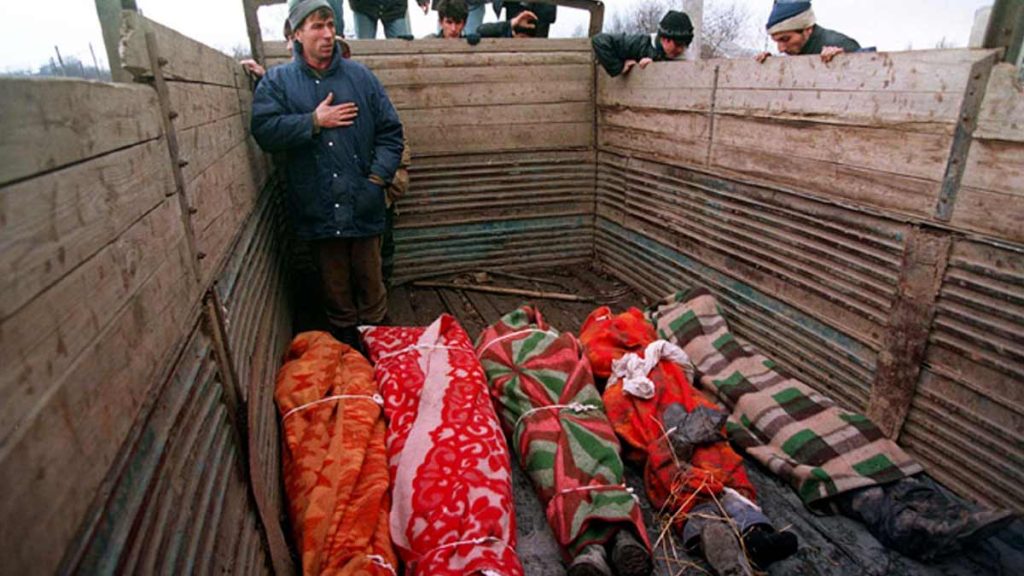
Chechens collect the bodies of dead civilians in Grozny – December 1995
Credit – Photographer Mikhail Evstafiev – used under Creative Commons License
In Chechnya, the violence from 1994 to 1997 left an estimated 100,000 civilians dead, 500,000 displayed, and thousands missing. The republic and the economy were in tatters, and thousands of Islamic militants who had fought against the Soviet Union and Russia for more than a decade were looking for a new fight.
Terrorism didn’t end with the end of the First Chechen War
There is significant evidence that Al Qaeda and sympathetic Islamic terrorist groups helped arm, finance, and supply Chechen factions during the First Chechen War. Russian intelligence warned the CIA that bin Laden was working directly with Chechnya in an attempt to acquire Cesium-137 to build a dirty bomb but never specified a target. The 1995 Moscow incident dramatically increased efforts within Russia, with support from the West, to secure its reserves of refinied radioactive materials.
After the initial declaration of independence by Chechnya in 1990, the territory became increasingly radicalized. Much like in the Soviet Union’s war in Afghanistan, executions, torture, rape, and the destruction of towns and villages fueled a radical Islamic response. In early 1995, Dudayev was deeply unpopular and faced a no-confidence vote, which he stopped by absorbing all political power. The successful terror attacks against Russia, combined with Russian brutality, drew thousands to the Chechen cause while introducing even more radical elements into the mix. Dudayev’s transition of Chechnya to Islamic law resulted in additional support from his Al Qaeda and other terror network financiers. For the Western conscious, the violence in Chechnya was little more than a footnote.
The end of hostilities did not bring an end to terrorism committed by radical Islamist Chechens. On April 21, 1997, on the one-year anniversary of the death of President Dudayev, Basayev was credited with the bombing of the Armavir Railroad Station in the Krasnodar Krai region of Russia, killing three and wounding eight. He is also believed to be behind the planning of the April 28 train station bombing in Pyatigorsk, which killed two and wounded 17. In that incident, the Federal Security Service of Russia (FSB) arrested two Chechen militants. The two women would be sentenced by a Russian court in March 1999, sparking Dudayev to vow a new wave of terrorism.
Although peace was achieved within Chechnya, the open issue of full Chechen independence had been pushed back. It is highly unlikely that Moscow negotiated in good faith, and an embittered Vladimir Putin was building his own inner circle within the Russian oligarch class. He had political aspirations. Chechnya’s shattered economy and infrastructure plunged the country into chaos, where rival Muslim factions ranging from traditionalists to those seeking to establish a caliphate fought for control.
Much like Europe and the United States, Russia got its first taste of Al Qaeda-supported terrorism in the 1990s. Decades of misguided foreign policy by the new post-Cold War allies served to strengthen the ranks of multiple terrorist organizations.
By the end of 2001, Russia and the United States would be united in their mutual war against terror, and both countries would have new Presidents. One could be described as overly idealistic, and the other was plotting the return of the greatness of the Russian Imperial Empire.
Tomorrow’s installment: Al Qaeda spreads terror to four continents, killing thousands, leading to the 9/11 attacks. The Second Chechen War starts, and a new American President sees the new Russian Federation President, Vladimir Putin, as an ally in the war against terror.
Read Part Seven: The complex history of Islamic extremism and Russia’s contribution to the rise of Al Qaeda and ISIS

